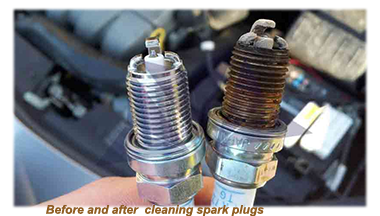 Maintaining the auto electric system in a classic car at the highest level is a very important factor in order to ensure that the vehicle will not only run smoothly but also anticipate problems before they get out of hand.
Maintaining the auto electric system in a classic car at the highest level is a very important factor in order to ensure that the vehicle will not only run smoothly but also anticipate problems before they get out of hand.
The electrical wiring of a car can be compared to the circulatory system of the human body. It consists of a battery, which acts as the heart, supplying electricity similar to blood flow through the wires, which can be seen as the blood vessels. This electricity is then distributed to the various components of the car that require it, before returning back to the battery.
The analogy becomes even more accurate when takeN into account that the flow of electrical current through an auto-electric systme is unidirectional. The flow originates from the battery, travels to the component being powered, and then returns to the battery through the vehicle's metallic body.
Electricity also flows under pressure. The pressure at which electricity flows is measured in volts, while the quantity of electricity flowing is measured in amperes, commonly referred to as amps. However, the amount of electricity flowing is typically expressed in another unit called watts.
![]() Make sure the battery terminals are clean and free of corrosion, and check the battery's charge regularly.
Make sure the battery terminals are clean and free of corrosion, and check the battery's charge regularly.
![]() Look for any frayed or damaged wiring, and make sure all connections are tight.
Look for any frayed or damaged wiring, and make sure all connections are tight.
![]() Make sure the alternator is working properly and providing enough voltage to the car's electrical system.
Make sure the alternator is working properly and providing enough voltage to the car's electrical system.
![]() :Make sure it is in perfect working order
:Make sure it is in perfect working order

![]() Examine all the fuses and make sure that they are functioning to their maximum capability
Examine all the fuses and make sure that they are functioning to their maximum capability

![]() Inspect the distributor cap for any cracks or damage. If the cap is damaged, it will need to be replaced.
Inspect the distributor cap for any cracks or damage. If the cap is damaged, it will need to be replaced.
![]() Check the rotor inside the distributor for any signs of wear or damage. If the rotor is damaged, it too will need to be replaced.
Check the rotor inside the distributor for any signs of wear or damage. If the rotor is damaged, it too will need to be replaced.
![]() Check the connections to the starter and solenoids. Make sure that the wires are securely connected and that there is no visible damage to the wires or connectors. Test the starter and solenoids, by attempting to start the car.
Check the connections to the starter and solenoids. Make sure that the wires are securely connected and that there is no visible damage to the wires or connectors. Test the starter and solenoids, by attempting to start the car.
![]() Examine the spark plug wires closely for any damage, that can include cracks or fraying. If the wires are damaged, they will need to be replaced.
Examine the spark plug wires closely for any damage, that can include cracks or fraying. If the wires are damaged, they will need to be replaced.
![]() If there is evidence that electrical components, such as spark plugs or ignition coils, are beginning to become old or worn-out, steps should be taken to replace them without too much delay.
If there is evidence that electrical components, such as spark plugs or ignition coils, are beginning to become old or worn-out, steps should be taken to replace them without too much delay.
![]() To ensure that the auto-electrical system is working to maximum capacity, fir a voltage regualtor. A voltage regulator helps to ensure that the electrical system is receiving a steady voltage, which can help prevent electrical problems.
To ensure that the auto-electrical system is working to maximum capacity, fir a voltage regualtor. A voltage regulator helps to ensure that the electrical system is receiving a steady voltage, which can help prevent electrical problems.

![]() Make sure to follow the restorer's recommended maintenance schedule for the classic car's electrical system.
Make sure to follow the restorer's recommended maintenance schedule for the classic car's electrical system.
Follow these tips,and make sure that the classic car's electrical system will remain in good working order and continue to run smoothly.
br4



